A priori, the hairdresser Luc Vincent does not have the profile of the typical techno entrepreneur at all. In 2018, he decided to “set up on the web”, according to his expression, to sell his homemade hair products.
Posted at 6:00 a.m.
“We were driving a bit at a loss, but we had time to settle in,” explains the professional whose business is based in Vaudreuil-Dorion. When the pandemic arrived, it was a boom. We went from a turnover of a few hundred thousand to several million dollars. »
The example of Luc Vincent perfectly illustrates the findings of an unpublished study by the Business Development Bank of Canada (BDC), which will be unveiled on Tuesday morning. Based on two surveys of 2,069 managers of small and medium-sized Canadian businesses, enhanced by two econometric analyses, this study establishes a close link between financial health and “technological maturity”.

PHOTO ROBERT SKINNER, LA PRESSE ARCHIVES
Pierre Cléroux, Vice President and Chief Economist at BDC
“SMEs that invest in digital technologies perform better than others,” summarizes Pierre Cléroux, vice-president and chief economist at BDC. It’s been said for a long time, but the study shows it. Those who invest more have stronger growth, are more resilient and export more. They also have less difficulty obtaining financing. Well, that surprised us. »
One in 20 ahead
In 2021, SMEs invested an average of $118,430 in digital technologies, but the picture varies enormously depending on the size of the business. Those with between 1 and 4 employees invested $48,243, while the largest, between 100 and 499 employees, are also the most ambitious in this regard, with an average of $422,427.
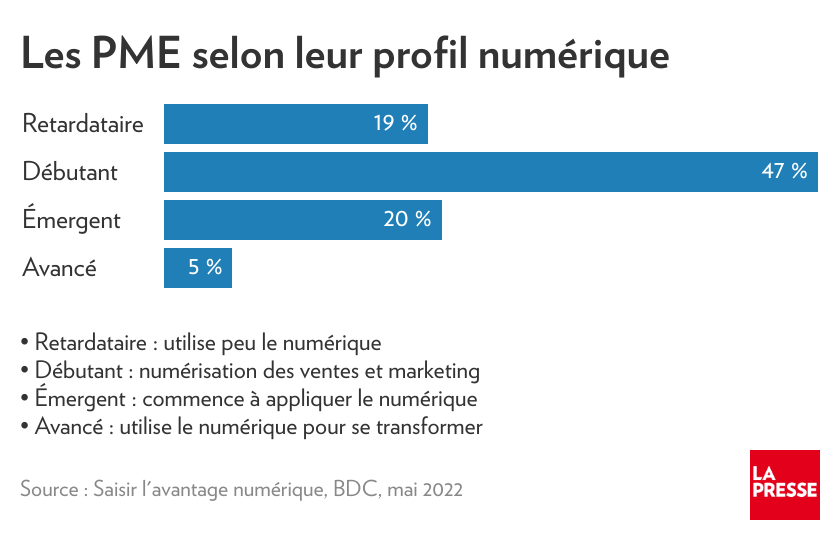
First observation, barely 5% of SMEs can be considered as “advanced” in digital terms. We thus qualify companies that have implemented a set of measures, ranging from online sales to data analysis, including the digitization of business processes, the development of a digital plan and the design of ‘a website. The BDC study rated companies according to six “axes” which allowed a classification into four distinct profiles.
It is by comparing these profiles to more traditional economic data that we have found that technological maturity is an excellent indicator of financial health. Two tables, in particular, are eloquent.
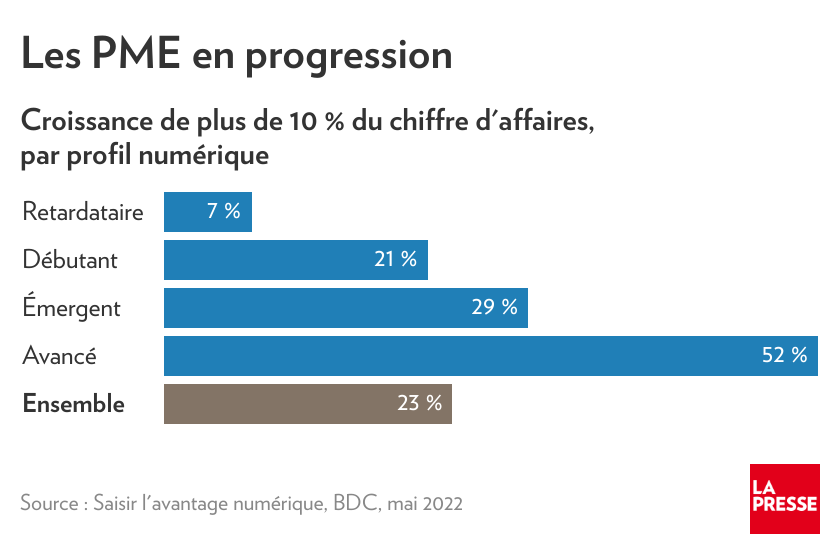
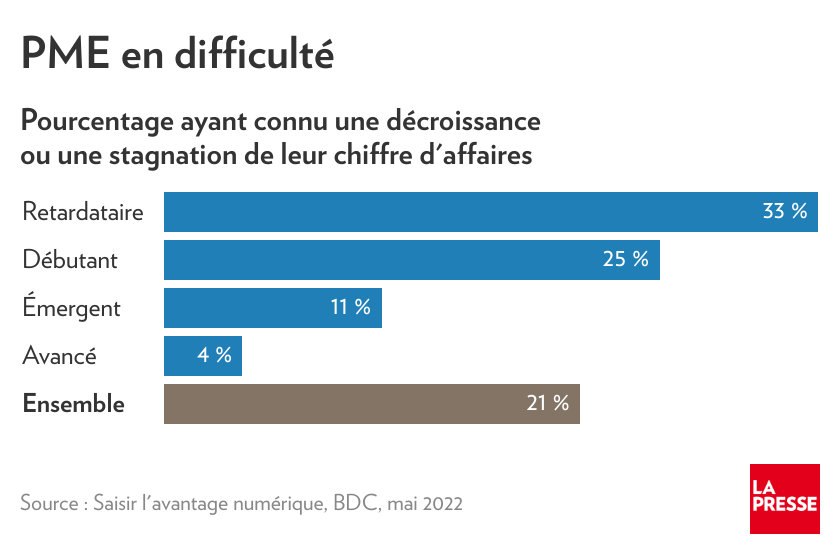
The proportions are similar when we speak of export: if 11% of latecomers have embarked, the percentage rises to 60% among the most advanced.
“We have had quite a success internationally,” says hairdresser Luc Vincent, whose company has about fifteen employees. “Before the pandemic, we packed in the basement with my wife. In 18 months, we are in a 5000 square foot warehouse. »
“We see that there is a gap between companies that invest and those that don’t,” says Cléroux. Among the so-called “laggards”, 33% had losses or zero growth. It’s huge. It’s hard to make a profit when you’re not digitized at all. »
There is also a direct link between technological maturity and the responsiveness of companies to take measures to stand out from the competition.
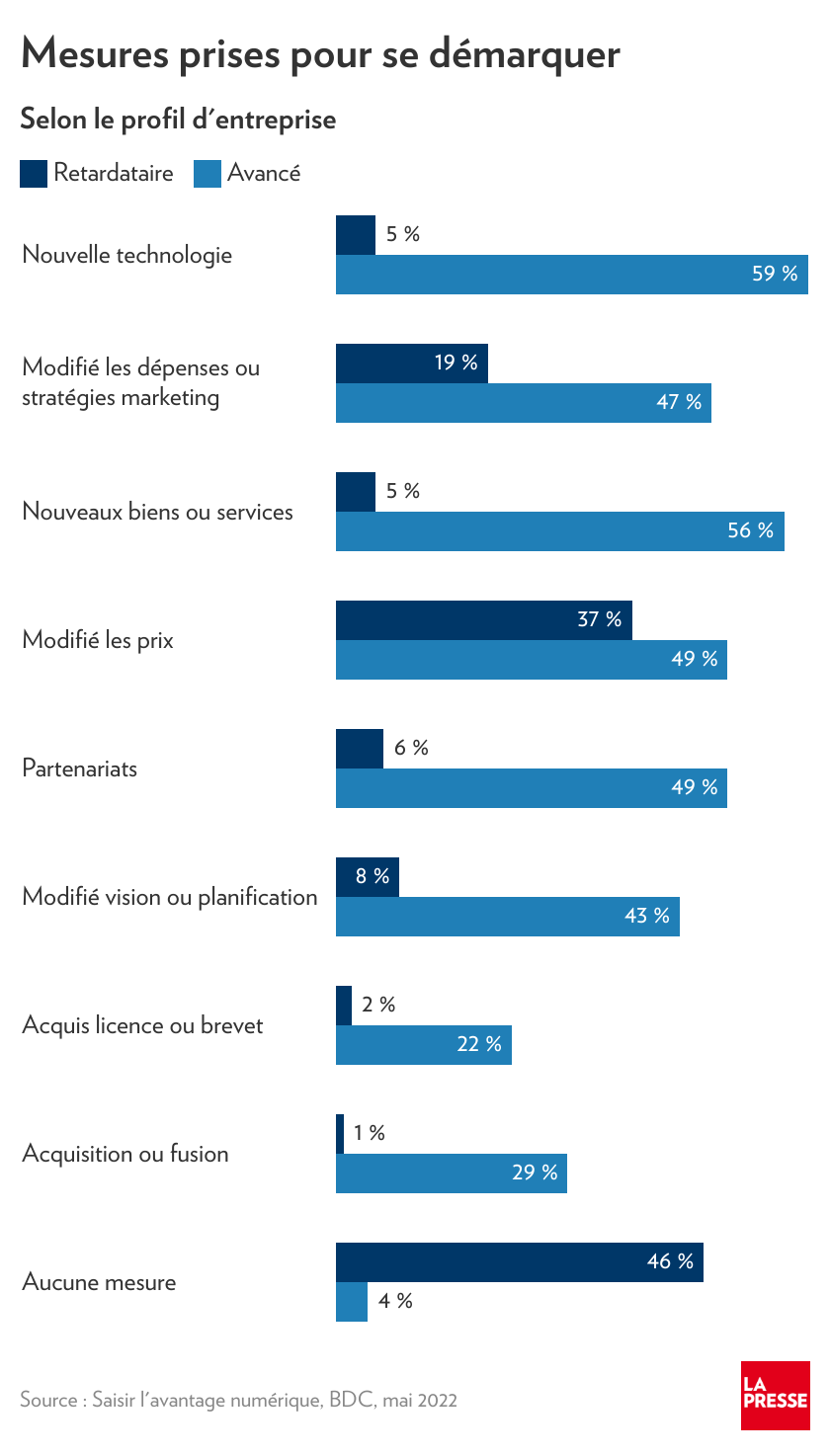
Minority women
The least digitized sectors are personal services, construction, natural resources and wholesale trade and transport. At the other end of the spectrum, it is in retail trade and ICT (technology, information and culture) that we find the best scores.
We also dissected the composition of the most advanced companies to know the profile of their owners. Women and people with disabilities are the least represented, while young people under 35 and Indigenous people are among the most tech-savvy.
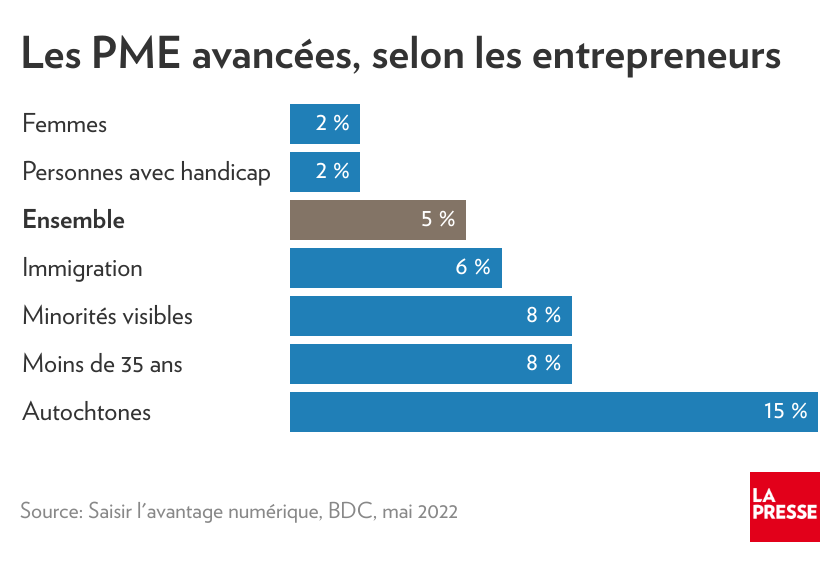
“We have no explanations, it’s a simple observation”, specifies the vice-president of the BDC.
Entrepreneurs were also asked about the main barriers to digitizing their business. For 42% of them, it is a problem of too high costs; 32% are worried about cybersecurity; and 27% point to uncertainties as to the profitability of such a transformation.
Rather unprecedented in such a study, an entire page is devoted to demonstrating, point by point, the low cost in 2022 of the solutions offered. An entry-level website costs between $0 and $29 per month, a mid-range accounting system can be purchased between $11 and $48, and high-end customer relationship management will cost between $60 and $100 per month.
The issue of high costs, assures Mr. Cléroux, “is no longer true. We wanted to dismantle this myth, it is persistent.
The BDC, it should be remembered, is one of the major partners of the very recent Canadian Digital Adoption Program (PCAN), which targets some 160,000 SMEs within four years.
“It’s very easy, when you have the right tools,” says Luc Vincent. Facebook, Shopify, they have everything, it’s plug and play. »
BDC’s chief economist also disagrees with an oft-heard claim that digital transformation isn’t necessarily attractive to all types of businesses. “E-commerce has tripled during the pandemic, more and more consumers are buying online and when they’re not, they’re going online for information. If you are not there, you are not visible. »
The study also features a Winnipeg hairdresser, Praise Okwumabua, who, like Luc Vincent, had started selling online before the pandemic and saw her sales jump when her store closed its doors. “She is very creative. By putting videos on new ways of doing hair, she attracted customers, underlines Mr. Cléroux. The new generation wants to make appointments online, they no longer call. »

